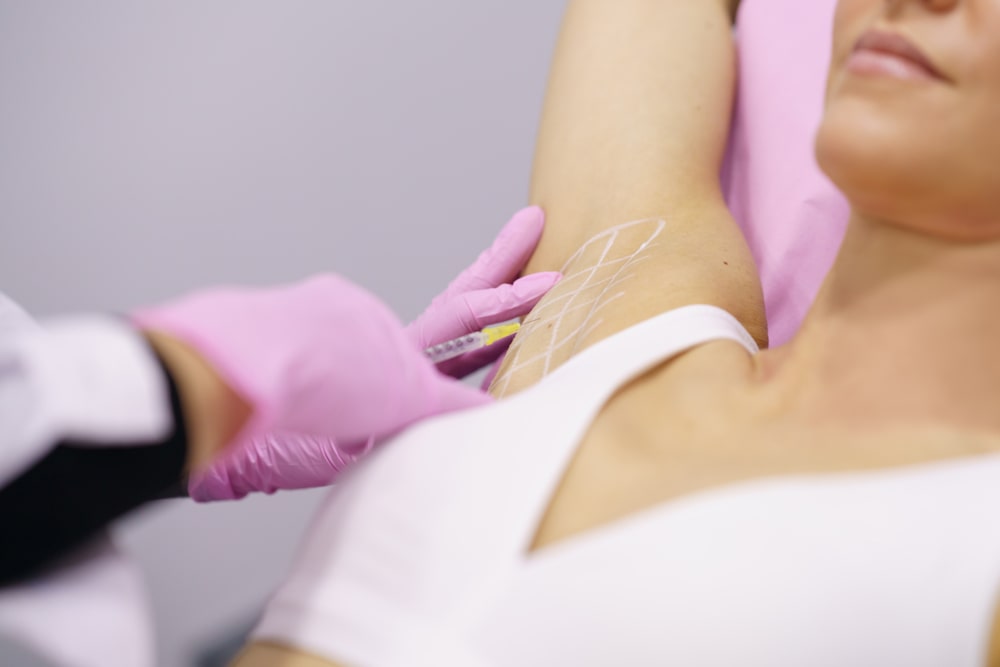
Botox Injections for Hyperhidrosis: Exploring the Pros and Cons
Hyperhidrosis is the name given to excessive or uncontrollable sweating, and can significantly impact an individual's quality of life. While several treatment options exist, one popular approach involves using botulinum toxin type A, commonly known as Botox. This article aims to provide an overview of the pros and cons of using Botox as a treatment for hyperhidrosis.

Pros of Using Botox for Hyperhidrosis:
- Effectiveness in Reducing Excessive Sweating: Botox injections have demonstrated remarkable effectiveness in reducing sweat production in the treated areas. The toxin works by blocking the signals that stimulate the sweat glands, resulting in a noticeable decrease in sweating. Numerous studies have reported significant improvement in hyperhidrosis symptoms following Botox treatment, making it a reliable option for those seeking relief from excessive sweating.
- Minimally Invasive and Convenient Procedure: Botox injections for hyperhidrosis are minimally invasive, involving the injection of the toxin into the affected areas, such as the armpits, palms, or soles of the feet. The procedure is relatively quick, typically taking around 15-30 minutes, and patients can resume their daily activities shortly afterward. The convenience and minimal downtime associated with Botox injections make it an attractive option for individuals with busy lifestyles.
Cons of Using Botox for Hyperhidrosis:
- Temporary Relief: One significant drawback of using Botox for hyperhidrosis is that the effects are temporary. On average, the benefits of Botox injections last between 4 to 12 months, depending on the individual. After this period, the effects gradually wear off, and the sweat glands regain their normal functionality. As a result, patients require repeat injections to maintain the desired results, which can be costly and may inconvenience some individuals.
- Potential Side Effects: While Botox is generally considered safe, there are potential side effects associated with its use for hyperhidrosis treatment. Common side effects include mild pain or discomfort at the injection site, bruising, or swelling, which typically resolve within a few days. In rare cases, patients may experience more severe side effects such as muscle weakness, difficulty swallowing, or respiratory issues. It is crucial to discuss these potential risks with a qualified healthcare professional before opting for Botox treatment.
Botox injections have emerged as a viable treatment option for individuals suffering from hyperhidrosis, providing effective relief from excessive sweating. The procedure's minimally invasive nature and convenience make it an appealing choice for many patients. However, it is essential to consider the temporary nature of the results and the potential side effects associated with Botox injections. Ultimately, consulting with a healthcare professional who specialises in hyperhidrosis treatment can help determine the most suitable course of action based on individual circumstances.
References:
Hornberger, j., Grimes, k., Naumann, m., Glaser, d., Lowe, n. J., Naver, h., ... & Ahn, s. (2004). Recognition, diagnosis, And treatment of primary focal hyperhidrosis. Journal of the american academy of dermatology, 51(2), 274-286.
Campanati, a., Penna, l., Guzzo, t., Marconi, b., Giuliano, a., & Offidani, a. (2013). Treatment of primary axillary Hyperhidrosis: retrospective analysis of a large patient series treated with botulinum toxin type a. Dermatologic therapy, 26(2), 157-161.
